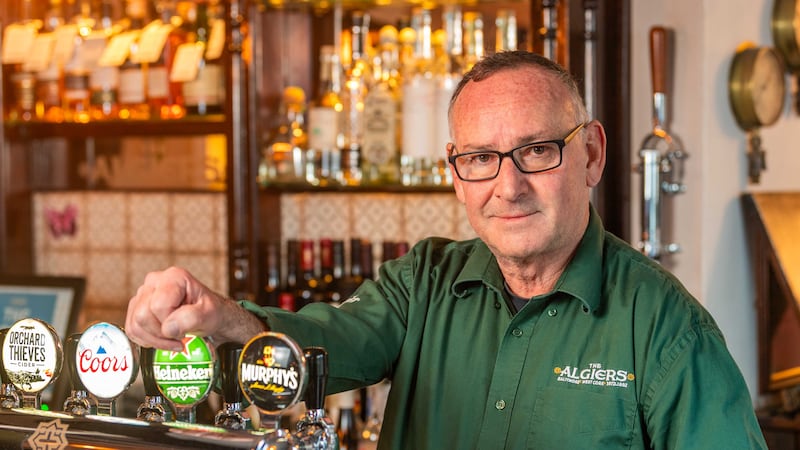The Royal Hibernian Academy (RHA) is 200 years old this month. During that time, it has experienced various vicissitudes, which it has managed to overcome, as it continues to promote the arts in Ireland.
Its foundation was “the culmination of a series of efforts to organise and promote artists and exhibitions in Ireland” and “although a tacit acknowledgement of the pre-eminence of the Royal Academy, London, asserted and defined Dublin as a centre of the arts,” according to Aidan Dunne, writing in this paper (January 5th, 2019) in a review of John Turpin’s two-volume history of the RHA. It began with a royal charter and a grant of £300, its letters patent describing it as the Royal Hibernian Academy of Painting, Sculpture and Architecture, which included a National School of Art.
The first elected president, landscape painter William Ashford, occupied the position for a short time because in 1824, architect Francis Johnston became president. He financed the building of Academy House as a home for the new institution on Lower Abbey Street, Dublin. In May 1825, the first exhibitions took place and were held annually thereafter.
Unsurprisingly, the RHA modelled itself on the Royal Academy with its emphasis on collective professionalism and exhibitions, unlike academies elsewhere in Europe, where the emphasis was on teaching.
Classic jingle: How a US suburb provided the setting for one of the world’s most famous Christmas tunes
Love Lee: Colette Sheridan on a new exhibition celebrating Cork’s river
Frank McNally on 19th century engineering project that linked Tipperary with ‘civilisation’
A Passage to Innocence – Frank McNally on an anthology of old school routes remembered
Such success did it experience in its early years that it paid its officials, an approach with which the treasury was less than happy, but decline set in due the shock of the Great Famine on the Irish economy and a falling off in attendances and sales.
Internal administrative divisions exacerbated an already bad situation.
“For a period, the academy was headed by duplicate and antagonistic sets of personnel, with George Petrie on one side and Michael Angelo Hayes on the other,” according to Aidan Dunne.
They differed on how to make the academy economically viable and the upshot was a commission of inquiry was established by the department of science and arts, the conclusions of which were disheartening: too few academicians, lack of appreciation for the fine arts among the Irish public and too many Irish artists looking to London for their livelihood. On the one hand, it questioned whether a government grant should be provided at all but on the other, said that a larger grant would be necessary if the academy’s schools were to succeed.
In the event, a new charter was granted, involving a wider membership, the RHA set about tackling its problems and improvement occurred in the later 19th century. ”With a growing domestic market for portraits and other easel paintings, including genre and landscape subjects, Irish artists could make a living at home,” Aidan Dunne has written, and the Celtic revival plus the growing influence of French painting also helped in the creation of a vibrant Irish visual culture.
But fresh challenges were on the horizon. The Dublin Metropolitan School of Art (DMSA) posed a serious challenge for the academy’s schools and Hugh Lane’s exhibitions, which introduced French Impressionism, caused the RHA to pursue a reactionary course, casting it as an opponent of modernism.
To make matters worse, its annual exhibition was in progress when the Easter Rising broke out. The shelling of O’Connell Street caused a fire in the academy which destroyed its entire annual exhibition, its library and all its records.
Painter Dermod O’Brien, its president from 1910 to 1945, played a vital role in preserving its existence and furthering its development. He helped it to adapt to the emerging newly independent State, women began to be admitted as members and its annual exhibitions continued in the DMSA gallery and then the National Gallery. A potential new headquarters at 15 Ely Place was finally acquired in 1938 but took many years to develop and the RHA’s wariness in relation to modernism persisted for too long.
Obstacles to its new headquarters were Dublin Corporation’s efforts in the 1950s to compulsorily purchase the site for a car park and builders the Gallagher Group’s ups-and-downs; Matt Gallagher died suddenly in 1974, leaving no provision in his will for the completion of the building, architect Raymond McGrath died in 1977 (Arthur Gibney replaced him), and the Gallagher Group collapsed in the early 1980s.
Despite all these setbacks, thanks to the stalwart work of many people, especially Ciarán MacGonigal (director in 1992) and artist Thomas Ryan, 15 Ely Place was completed and opened to the public in 1985 – for the RHA’s 156th annual exhibition, the first it could hold on its own premises since 1916.
Closed from 2007 to 2009 for extensive renovations, its refounded school brought education back to the academy for the first time since 1942 (it also runs Technology University of Dublin accredited courses since 2018), it has a large drawing studio and six studios available to artists through open submissions as well as administering other studios, such as the Tony O’Malley residency in Kilkenny.
Given its chequered and challenging history, the RHA has certainly much to celebrate in this its bicentenary year.













